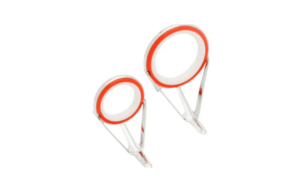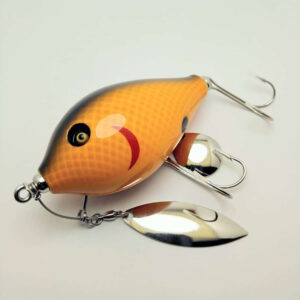The Gigantic Squid Fishing in Japan
The squid is one of the popular fish in Japan, not only as a nice Japanese food ingredient but also a target.of fishing. It is said that there are about 140 species of squid around Japan.
One of the biggest species is Taru-ika (literally, Taru for barrels and Ika for squid, “Barrel squid,” Thysanoteuthis rhombus.) It reaches over 1 m of trunk length. Though we cannot compare the sizes of the world's biggest squid, Colossal Squid or Giant Squid, it is an amazing size as a practical fishing target.
This article shows the species first, and then introduces the fishing for this big monster squid in Japan, with some information about its history at the end.
Species and Distribution
This Taru-ika prefers warmer water, and they reach the middle part of Honshu, the Sea of Japan, with the warm sea current. Globally, it distributes in the tropical and subtropical waters of the Atlantic, Pacific and Indian Oceans. Japan is one of the areas in which the number of this squid is higher. In Hawaii, this squid is called the diamondback squid.
It dwells from very shallow to 1,000 m depth ranges, following the food sources. It tends to dive deep during the daytime and comes up in shallower water to hunt their food during the night. It is said to be pelagic and living in the open sea. It prefers to live alone, not flocking, which is a rather unique characteristic among squid species.
There seems to be no clear mating season, as long as the water temperature is warm enough. However, the individuals around Japan are said to have seasonality (reference.) They are born in the early spring around the southern seas, and swim up near Japan in the middle of the year. Most individuals end their lives within a year. Some research said that it grows up at the speed of 9 to 12 cm per month. We can imagine how aggressive they hunt.
As you can imagine, it is predatory, and it eats fish, crustaceans, and other squids. From this research, Taru-ika's squid contents analysis, caught from September to November, revealed that 83% was other squids, and the rest was fish.
In Japan, cities along the Sea of Japan are famous for the catch of this squid. They are Shimane, North side of Hyogo, Kyoto, and Fukui.
Fishing for Taru-ika
Of course size matters in fishing, as you all know. Obviously it is one of the biggest attractions in Taru-ika fishing. If you had caught any squids before, you may know that the pull of squid is unique. Their jet blow made them a good and strong swimmer. Some of you might be surprised to know how powerful its swimming power was. As there are a lot of Japanese anglers who know about this jet propulsion, naturally their attention is drawn by the big size Taru-ika.
Around the above mentioned prefectures, this squid is a nice target in late autumn and winter. From its life cycle, squids in these seasons are bigger. Many are targeting these giants in night fishing. It is also natural that night fishing is effective, because of their behaviour.
Tackles and Technique
The most popular way of catching it is jigging. The used jig is 150 to 200 g. The total tackle is similar to slow jigging or light jigging. The used main line is #5 (approximately 0.38 mm or 36 kg) to #8 (0.50mm or 45kg) of the braided line (about Japanese line indication is here.) The leader is fluorocarbon 60 lb or thicker.
The technique of this jigging is one pitch jerk and pause. After the captain’s call of the target depth, you place the jig to the range by 10 m deeper than the mentioned depth. Then you start to jerk, one time then pause, and keep doing it. The depth range varies depending on the condition. In some cases, it can be caught near 10 m depth, and much much deeper in other conditions.
After you get a bite (or pull,) you hook it well and start to wind up keeping the line tension high. You need to keep it in your mind that the hooks are barbless while dealing with the squid.
About the cultural aspect of Taru-ika
The relationship between the Japanese food culture and this giant squid is not long. The commercial fishing for it became active after the special method of fishing was invented in the Tajima area, in the 1960’s.
Interestingly, this method is not netting but fishing, as you can see in the figure below.
Image from this article.
The original rigs were used with the bait, but around the 1970’s, the baits were replaced by the artificial ones, according to this same article (refer the image below.)
The figure on the history of rigs to catch Taru-ika, from this article.
Because the size of the squid is large, some conditions made this fishing more effective than to catch smaller species. If you know a little more about squid fishing (leisure fishing) in Japan, as you can read in my blog post, the Egi squid lures started pretty much earlier in the 18th century. But, interestingly, this Taru-ika was not the major food source for Japanese people, until the modern period.
One of the reasons is that the taste of this Taru-ika was not as good as other squid species in Japan. Its meat is hard and not tasty, unless it is frozen and kept for a certain period, once. I am sure that Japanese people in the pre-modern period have known this species, and they could catch this squid. But they did not do so because it was not tasty.
The turning point was the technologies. Along with the lowering cost of frozen logistics facilities including transportation, Japan is exposed to importing squid species. Many squids from other Asian countries and from the US are making the change in the food in Japan. Prices of squids Japanese people eat have become lower. Facing these circumstances, Japanese commercial fishermen turned their eyes to Taru-ika. Currently, most of the squid Sushi is made from these frozen squids, some are imported and some are Japanese Taru-ika. For its size, the way of treating the meat is easy and cost effective.
Here is the brief information about the giant squid fishing in Japan. As the new style of fishing, this Taru-ika is gaining popularity. When you visit Japan, you are likely to visit sushi restaurants or to go to fish markets. Then you can remember this giant squid fishing in Japan, along with making memories of Japanese food.

